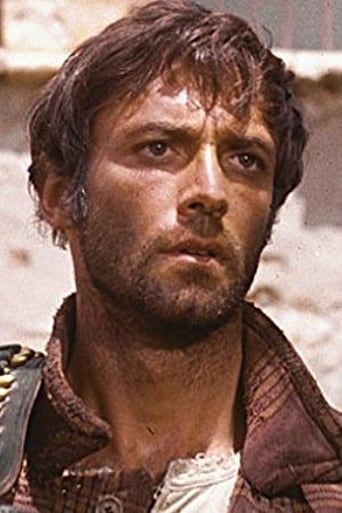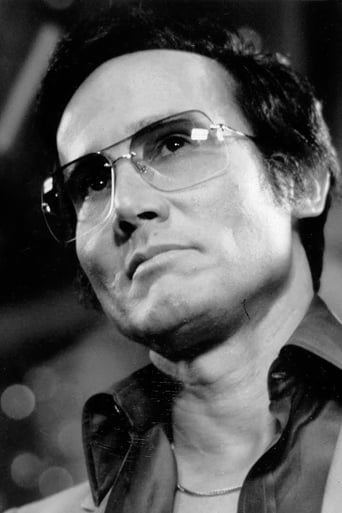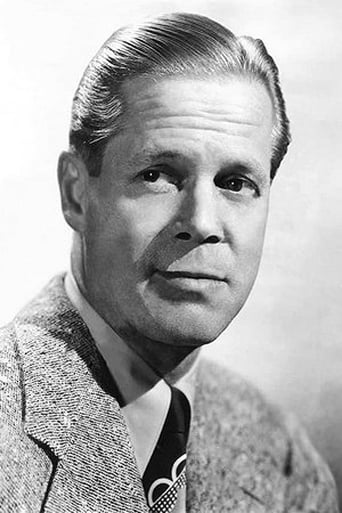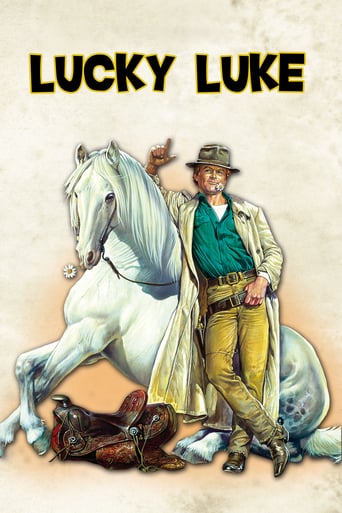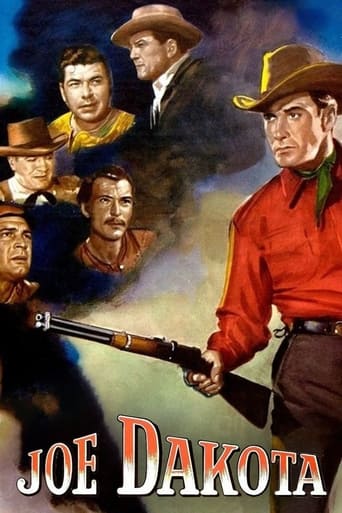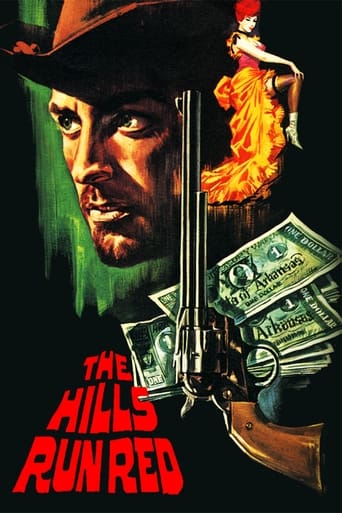
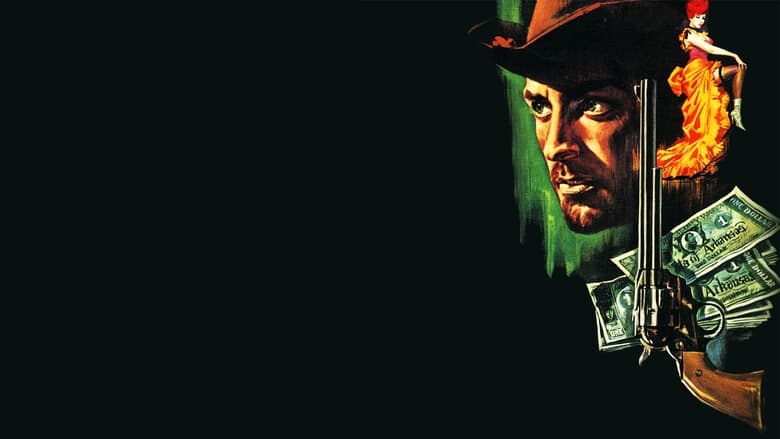
The Hills Run Red (1966)
After the Civil War ends, two soldiers return home with a cache of stolen money. They are caught by Union troops. One escapes, but the other is sent to prison for five years. When he gets out and goes home, he finds that his wife has died in poverty because his partner kept all the money, and is now a major power in the area with an army of deadly gunmen to back him up.
Watch Trailer
Cast


Similar titles
Reviews
You won't be disappointed!
It is a whirlwind of delight --- attractive actors, stunning couture, spectacular sets and outrageous parties.
Story: It's very simple but honestly that is fine.
Great example of an old-fashioned, pure-at-heart escapist event movie that doesn't pretend to be anything that it's not and has boat loads of fun being its own ludicrous self.
Originally titled A River of Dollars and often retitled as Blood In The Hills & Dollar Power, the film remind me of the psychological Hollywood westerns of the 1950s in how bland, it is. Despite, being one of the earliest spaghetti westerns made after the Eastwood/Leone Italian Spaghetti western boom, in 1967. A lot of people have never heard of this movie. It's easy to understand, why. The reason why this film isn't going to stand out, much is because how genetic the plot is. The revenge plot isn't anything new, to the Western genre, as if it was often used in previous films like Marlon Brando's 1961's film, One-Eyed Jacks. Directed by Carlo Lizzani, a former film critic and veteran director of a multitude of spy thrillers and war dramas, the movie tells the story of two ex-rebel soldiers, Jerry Brewster (Thomas Hunter) & Ken Seagull (Nando Gazzolo) fleeing toward the Mexican border in a wagon, having made off with a huge sum of money stolen from the United States government, during the end of the Civil War. Just before reaching the safety of foreign soil, they are intercepted by a U.S. army patrol and Jerry is capture and sent to a military prison. Five years later, Brewster is released and returns home to reunite with his wife and son. He soon finds out that his house is deserted, his wife has pass away, and his son is missing, all, because of Seagull's greed. Maddened by the betrayal, Brewster seek revenge, over his former-friend, in hope, of finding his missing son. Without spoiling the movie too much, you can clearly see, by the appearance of the film's main actor, Thomas Hunter, that he was hired, because how much, he looks like Clint Eastwood. Thomas Hunter isn't a bad actor, but he does overacted a bit. He mostly does a very earnest performance. I can't say, the same with Henry Silva's performance, as the Seagull's psychopathic henchmen, Garcia Mendez. Silva laughs, sings and snarls his way through the film. He was, way over-the top and surreal. He did have some of the most entertaining dialogue in the film. I love his quote about Brewster winning the right to work on his ranch. That was kinda funny. Still, his over-screaming of dialogue was a bit much and was very annoying, but he made it up with his sinister look in the film. It remind me, of a male version of the actress Rosie Perez. You can't stand them, but you like them, enough, to buy into, them, being the villains. Silva's character was modeled after Dirk Bogarde in the 1961's film, The Singer not the Song. Silva's performance was very influential to other actors such as Jack Palance. Jack probably based his character Ricciolo AKA Curly in 1968's film, 'A Professional Gun' on Silva's character. Dan Duryea looks way too old and tired, but turns in a touching performance as the stranger Getz, whose identity and motivation are only revealed in the film's final scene. Nicoletta Machiavelli is hauntingly beautiful as Mary Ann, Seagull's sister. She's a looker. I wish, they had, more for her character, but I'm alright with the amount of screen time, she was given. The movie has some strange bad dubbing, and the facial expressions that go along with it, don't match. It adds to the unintentional humor. The action is pretty good. Director Carlo Lizzani does good work here, mixing solid camera-work throughout most of the film with some neat touches including a Corbucci-esque style close-up fistfight. The best scene had to be the Saloon, toward the middle. Toni Secchi's cinematography is quite inventive with a camera shooting through windows, doors and interstices, giving the viewer the impression that the hero is in the middle of the most of the action. A set piece in which Mendez and his men massacre the patrons of an Austin saloon plays without music, lending the sequence a disturbing brutal realism. Similarly, the final shootout in the streets of Austin unfolds with little underscore. In my opinion, it's pretty forgettable. The tattoo cutting scene might be winced-worthy, but it's pretty tame for today's standards. The tone throughout is generally quite dark although there are a few light hearted moments, that stop it becoming too grim. Pacing is very good. The script was often tampered with, and a lot of things, went deeply wrongs like the feel good ending. I like how weird, it is, with deceased characters suddenly reappeared. I guess, prolific, Oscar-winning producer Dino De Laurentiis didn't like, the downer ending. The feel-good ending is a little too American Western in style, but this is only a minor criticism. Ennio Morricone provides a suitable music score under the pseudonym Leo Nichols. Most of it was alright. The big, brassy theme here wasn't one of his better works, but still adds great atmosphere to the film. It does get overplayed too much, and become a bit annoying as the film drags along. The bittersweet love song, "Home to My Love," is performed by Italian singer Gino Spiachetti is pretty forgettable. The movie has aged well, due to Metro-Goldwyn-Mayer Studios & United Artists, coming in, and saving the prints. They did a pretty good, DVD transplant. While, it shows some grain in places. Most of the film footage is very clean and bright. The full screen version (pan and scan of the widescreen original) has contrast problems, making it difficult to see exactly who or what is on screen in some scenes. I really can't understand why MGM have bothered to include this far inferior version of the exact same cut of the movie on the disc at all. In 2008 there was a documentary developed about this spaghetti western entitled, 'A History of Dollars'. It's also worth- checking out. Overall: The Hills Run Red is a welcome addition to anyone's spaghetti western collection. It's an enjoyable movie. Pretty watchable.
Directed by one time film critic Carlo Lizzani, "The Hills Run Red" is a welcome addition to anyone's spaghetti western collection.The film begins with ex-confederates Jerry Brewster (Thomas Hunter) and Ken Seagall (Nando Gazzalo) fleeing by stagecoach from soldiers following a successful heist. They agree that the only chance for escape is if one of the partners bails out with the cash. To decide who should get away the two draw cards, with Brewster the unlucky loser. Seagall promises to look after Brewster's family before leaping from the stagecoach. He successfully hides with the money, whilst Brewster is captured and imprisoned for five years.On his release, Brewster returns to his now derelict family home. He finds a diary from his wife, and learns that she has been living in poverty during his absence, struggling to bring up their son alone. Seagall had shunned them, keeping the money himself and starting a new life under the name Ken Milton.Brewster screams out his intention for revenge, and is soon faced by gun-hands sent by Seagall. Luckily for him, an ageing gunman Winny Getz (Dan Duryea) is on hand to help out - a mysterious character that is never fully explained (although some assumptions can be made that I won't spoil here!) but acts as Brewster's "guardian angel" throughout the film.Learning that his wife has died and his son is missing, Brewster decides to settle his score with Seagall. On beginning his search he discovers that Seagall is attempting to drive out the local inhabitants of Austin, and in particular the leading light and saloon owner Brian Homer (Geoffrey Copleston). Aided by the demented Garcia Mendez (Henry Silva) and his gang. To confront Seagall and get his revenge, Brewster is forced to infiltrate the gang."The Hills Run Red" certainly has some interesting characters. Silva plays Mendez as a black clad demented psychopath. Hunter's lead role is not too far behind in the madness stakes (presumably bought on by that five years stretch, which appeared quite a gruelling and cruel imprisonment). Lets just say that both have some serious issues!! Of the two, Silva is particularly convincing, and his is the stand-out performance of the film. Hunter meanwhile could be accused of over acting at times here, although it is still an enjoyable display. Duryea's portrayal of the mysterious Getz also merits much applause.The love interest is provided by Nicoletta Machiavelli as Seagall's sister Mary-Ann. Constantly having to dismiss advances from Mendez, her attraction to Brewster is immediate.Music is courtesy of one Leo Nichols (better known as Ennio Morricone to you and I). In truth it is not one of his better scores, but still adds great atmosphere to the film, as one would expect from the master. It just does not have anything to make it unique, and is not as memorable as his more heralded efforts.All in all "The Hills Run Red" makes for a great viewing. At times it can be quite brutal (such as the saloon massacre). And how I winced as Brewster's tattoo is cut from his arm whilst he is awake! But it is a gripping story, well directed and well worth watching.
This is an unusually-structured western, but a very satisfying one. TCM played a nice letterboxed print of this, and it was a surprisingly-engrossing revenge drama. Some unexpected violence in the several shoot-outs made this more brutal than usual for a mid-sixties western.
Basic plot involves Brewster taking the fall for his robbing partner Seagull and after being released from prison (which includes having to stand upright in a small barb wire cage) finds that his partner (now known as Milton) has taken the loot and prospered as an evil land baron. Not only that, but Brewster's wife has died in poverty and his young son believes him too be dead. It abandons logic and sense in favor of over the top abstract moments, lots of scenery chewing, like the expressionistic yelling on Brewster's behalf, and typical throwaway action. Fair supporting roles for Henry Silva as the Mexican henchman, with the wondrously cliched name Garcia Mendez, and Dan Duryea as the angel of mercy, Getts. Kudos to Milton/Seagull's line `I wanna' see you spit out your soul, Brewster.', and director Carlo Lizzani's pseudonym, Lee W. Beaver. The finale, like the film, is ridiculous, but fun and effective, involving Brewster and Gett's alone against a posse of bad guys, a ghost town, and some conveniently available dynamite.


